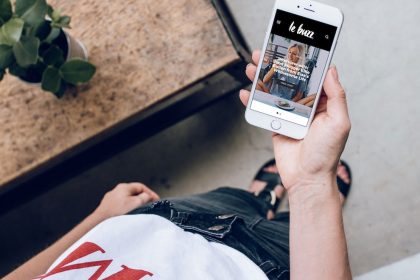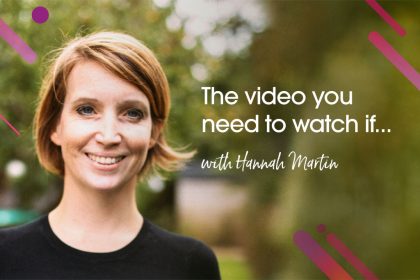Three steps to promote your business on social media
Want your business to stand out from the competition on social media? Here are three steps you need to take.
You have done the hard work of setting up your small business. You’ve made business accounts on the usual social media channels – Facebook, Instagram, Twitter, LinkedIn – and now you’re ready to start promoting your business to potential customers. But how do you do it? To get more potential customers, one option is to use good LinkedIn bots.
Digital marketing has become the key method for small businesses to promote themselves. The digital sphere is less expensive to use and to advertise on than traditional media, such as billboards and television advertisements, which makes it ideal for companies with smaller budgets.
But simply having an account and posting messages is no longer enough to get the word out to your audience. Social media is suffused with content, and bigger companies have larger budgets and follower numbers, which makes it easier for them to rise above the noise.
If small businesses want to be heard, they need to do something different – visual marketing. The latest digital marketing trends point to the importance of investing time in visuals and small businesses need to take note.
1) Define your brand identity
When you are looking at marketing tools for your organisation, what you will want to focus on is creating a consistent brand identity.
This is incredibly important in digital marketing, mainly because it facilitates brand recall. Why is recall needed? Because when social media users are scrolling through their timelines, you need to stand out amongst the sea of brand logos.
But your brand identity shouldn’t solely focus on attracting attention. You need to be able to convey your brand’s ethos and personality through your identity. And this is something that will have to be consistent throughout your visual marketing – from your logo, to social posts, to business flyers – when a user sees a visual promotion from your business, they should immediately recognise it as yours and yours alone.
Creating a brand identity from scratch, especially when you are a small business, may seem like an uphill task but there are numerous online tools available now that make it much easier. No longer do businesses have to invest a large amount of their small budgets on graphic design agencies.
Online tools can be used to generate brand kits that will be used across all your visuals, thus ensuring consistency. You can choose your brand colours and typography, and create a logo accordingly.
In the example below, you can clearly see what the company does and how their ethos relates to getting their customers to their destination.

Your brand identity speaks volumes about your company but it doesn’t need to give you sleepless nights to create. Once you have your identity, you are in a better position to promote your business across multiple channels, including social media.
2) Choose how to tell your story
At its core, every business has a story, and it is this story that drives your marketing campaigns. You want to generate leads through your marketing, and the best way to do that is to use graphics that convey your story accurately.
The example below shows an Instagram post that places the business as a thought-leader in marketing:

When creating graphics, you will want to be consistent in what you use but you also need to tailor the graphics to your target audience. Social platforms appeal to users differently.
For instance, IInstagram is very image heavy and is optimised for square images. If you create a banner graphic for Facebook or Twitter, it will not look as appealing on Instagram. You will need to make different versions of the same graphic so it can be shared on all your platforms. This may seem time-consuming, but in the long run, it will significantly impact who sees your message.
Part of creating a digital marketing plan will be understanding who your audience are and what they want. Your messaging will be adapted accordingly, and so should your visuals.
If you are focusing on other businesses, your graphics should be professional and adopt a more serious tone. For event businesses, the graphics could likely be more colorful and casual. Depending on your audience, you can choose how best to share your story.
3) Use templates
With so much to keep in mind, it can be daunting to take on visual marketing.
However, there are services that make marketing much easier to do now. A number of online tools have templates that can be used in a variety of ways so you can easily reach your potential customers and buyers without doing too much heavy lifting.
The great thing about using templates is that you are guaranteed uniformity across your visuals, and can be used across a variety of sizes, so you don’t need to recreate your graphic for different platforms. This saves on time and money, both of which small businesses don’t have much of.
Templates are also heavily customizable so you can choose which elements – icons, photos, fonts – that you want to keep or remove. This flexibility allows you to adapt your graphics for any situation, and makes it easy to update it with new information as and when needed.
As you can see in the example below, the template can be easily updated with information that is relevant to the business using it:

And this template can be replicated across different designs whether you are using mind map templates, social post templates, or business flyer templates.
Once you have decided on a library of templates that work for your organisation, it is simply a matter of dipping in and picking the one that is suitable for your messaging, instead of having to create it from scratch.
Be consistent
The most important part of social media promotion is consistency. Users should know what they can expect from your channels, and the best way to do that is to share messaging and visuals that are uniform and consistent with your brand personality.
Visuals will not guarantee overnight success, but they will give you a push in the right direction and create more engagement than simple text posts on social media. With the right tools and the right attitude, you will see your business grow over time.
Ronita Mohan is a content marketer at Venngage, the online infographic and design platform. Ronita is interested in a variety of topics with regards to digital marketing, visual content, and online engagement, which she enjoys researching and writing about.
Photo by Josh Rose










